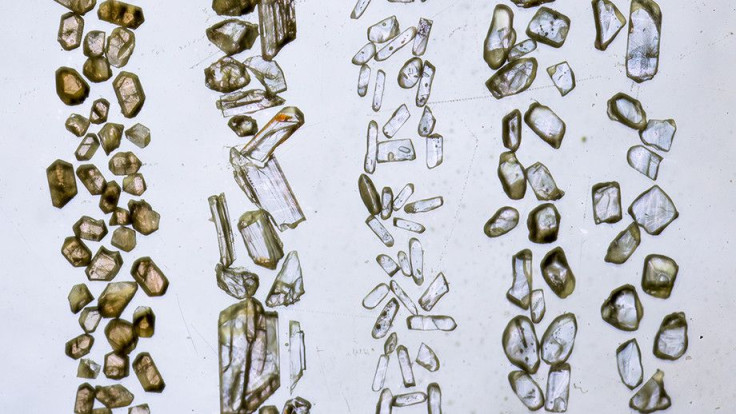Earth’s Rock History Shows Flat Planet Covered In Ocean Before Life Formed

What did Earth look like billions of years ago? Well, it was flat and almost entirely submerged. Not the kind of flat that immediately comes to mind — Earth was always a sphere. But researchers from Australian National University are saying there were no mountains and barely any land poked above the ocean’s surface in our planet’s first several hundred million years of life.
The scientists analyzed rock samples from Australia they called “the oldest known samples of Earth,” dating back 4.4 billion years, according to their study in Nature Geoscience.
Read: Stephen Hawking Says We Must Leave Earth Now Or We’re All Gonna Die
Earth itself, for comparison, is estimated to be a little more than 4.5 billion years old. The oldest known life form is from 3.8 billion years ago.
According to the research, small zircon mineral grains in rocks from Australia’s Jack Hills and their composition tell the scientists about the magma — molten rock from within the Earth — from which the grains came, and thus about conditions on the planet during its early history. That includes the activity of pieces in the crust called tectonic plates.
A key clue is that the zircon formed through the melting of igneous rocks. If they had instead formed from the melting of sediments, that would indicate some mountainous activity because the sediment melting is a hallmark of continental collisions, such as the kind crash between tectonic plates that formed mountain ranges like the Himalayas.
“So it appears that such events did not occur during these early stages of Earth’s history,” lead researcher Antony Burnham said in the statement from ANU, referring to the Hadean eon that roughly spanned our planet’s first 500 million years.
During this time, the research suggests, Earth may have had largely a flat texture, which would have meant the flat surface was sitting almost entirely underwater.
“The history of the Earth is like a book with its first chapter ripped out with no surviving rocks from the very early period, but we’ve used these trace elements of zircon to build a profile of the world at that time,” Burnham said. “Our research indicates there were no mountains and continental collisions during Earth’s first 700 million years or more of existence — it was a much more quiet and dull place.”
And it remained that way for a while: Burnham added the similarities between the old rock samples and rocks from the following 1.5 billion years show it took “Earth a long time to evolve into the planet that we know today.”
That ocean covering the Earth’s surface in its early years was probably not like we know it today. Other recent research suggests early life on Earth formed in an ocean that was more acidic, with a pH level closer to urine, saliva or milk, as compared to its more alkaline composition today.
It might sound odd to have a planet that is completely submerged, but some experts say that might be the norm, and the land coverage of Earth today, which hovers at 30 percent of the surface, is what is unique. A recent study found the exoplanets scientists are finding in the habitable zones of other solar systems likely have land coverage on their surfaces closer to just 10 percent.
See also:
© Copyright IBTimes 2024. All rights reserved.





















